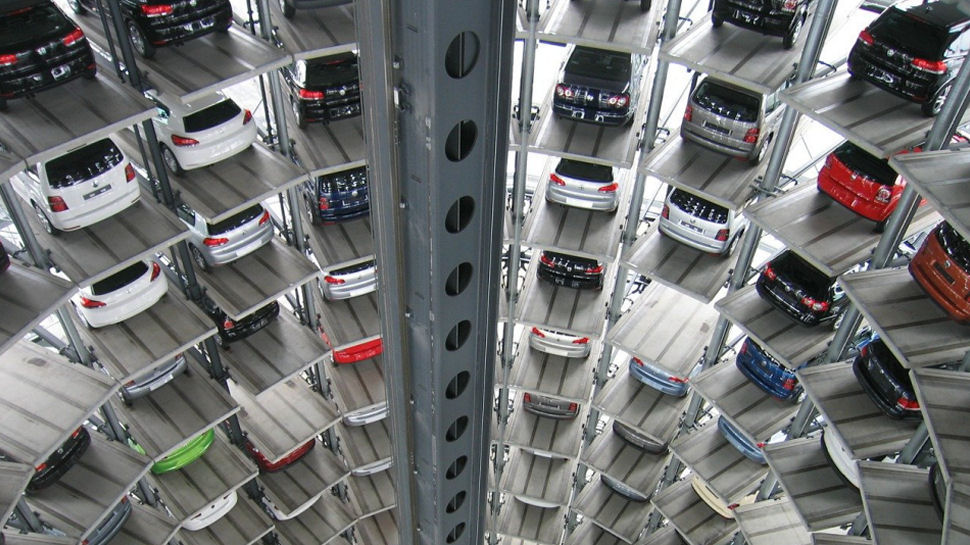Cyber Fordism: standardizing the digital world of vehicles
Discussion of how to prepare for connected vehicles

Connectivity underlies every aspect of the modern world – at work, at home, and everywhere in between. The explosion of the Internet of Things in recent years has given birth to a new level of communication between smart devices, and cars are no exception.
Adam Boulton is the Chief Technology Officer for BlackBerry Technology.
To take full advantage of this new era, the automotive industry needs to prepare its digital ecosystem. Setting the solid foundations of compatibility today will pay dividends for programmers, manufacturers and drivers in the years to come.
Mazes and knots
The gradual increase in digital components being used in vehicles has led them to evolve into an ironically organic mess. Innumerable sensors, processors, systems and subsystems overlap and intersect, but are unable to communicate or interact. This is due to each running in its own physical or virtual format, with no grand design to link them. While most consumers won’t see or be directly impacted by this chaos under the hood, programmers certainly can and are. The difficulty of reading, interacting and troubleshooting this differentiated data makes it harder to develop new features and even to fix potentially dangerous software issues.
While completely overhauling the digital ecosystem of entire fleets of vehicles may seem like too grand a venture to undertake, this is not the case. Not only will the investment in standardization pay off handsomely for every party, but the technology to do this is already here. This could significantly improve the process of tackling legacy issues and vulnerabilities in vehicle software. Traditionally, there has been a lack of contractual clauses assigning responsibility for addressing these quality defects. This meant that whenever an original equipment manufacturer (OEM) wanted to make a fix, it all too often became horrendously expensive. By standardizing how OEMs interact with different vehicles’ software, this process could be dramatically simplified.
Manufacturers and programmers today can take advantage of new technologies such as AI (Artificial Intelligence) and machine learning to process and to learn from the data being collected in the vehicle. These programs can standardize the data being collected by the array of previously incongruent sensors and turn it into valuable learnings.
Customer impact
This new era for the industry is not just exciting for a select group of programmers. Rather, it presents a plethora of new opportunities and capabilities for automotive manufactures to sell and consumers to enjoy.
Safety has always been a key feature in automotive design, and standardization offers new opportunities to take previous advances further. Cars are already equipped with a range of sensors including cameras, GPS, and odometers. If the information collected by these devices was collated, the vehicle would not only be able to create a more complete image of its conditions than previously possible, but also be able to respond to them. Cars driving down snowy roads could automatically detect the conditions and activate safety protocols such as traction control, while alerting the driver on a heads-up display.
Are you a pro? Subscribe to our newsletter
Sign up to the TechRadar Pro newsletter to get all the top news, opinion, features and guidance your business needs to succeed!
The vehicle would also be able to interpret the behavior of the driver and passengers in the vehicle to provide a safer or more pleasant driving experience. By analyzing changes in human behavior such as handling and speed, cars could detect when the driver appears to be texting, distracted, or not observing speed limits. It would then alert the driver and prevent a potential accident. Similarly, parents of infants could receive a reminder to engage the child safety lock when the vehicle detects a child in the rear seat.
Alternatively, car owners who share their vehicle with others could set up safety and monitoring protocols to keep passengers safe. Parents of teenage drivers may choose to receive customized notifications based on insights from vehicle sensors when the number of passengers in the vehicle changes, or when the vehicle occupancy level rises above the parents’ desired safety threshold.
Onboard mechanics
In addition to perceptible improvements to the driving experience, connectivity would also allow vehicles to better process data, helping to discover new opportunities for efficiency and safety.
For example, sensors monitoring the performance of individual components as the vehicle runs would be able to detect new or even future faults long before the driver would usually notice. Prevention is always better than the cure – diagnosing faults before they turn into a failure would not only increase safety but could also reduce repair costs for both consumers and manufacturers. Furthermore, digital bugs in connected cars could be detected, diagnosed and fixed remotely, without any need for physical intervention. Furthermore, the sensors in the car could detect the rate of deterioration in different parts and suggest ways to improve the lifespan of the vehicle. This could also apply to processes such as fuel usage – the car could advise more efficient driving speeds to reduce consumption and emissions.
Revolution is here
A century after Ford revolutionized the automotive industry by standardizing physical parts, car makers and drivers stand to benefit from a similar transformation. Standardizing the IT infrastructure of vehicles will allow developers to address issues and bring new features to market at record speed, which will in turn improve the customer’s driving experience and safety.
What’s more, this transformation will not be limited by model and brand of vehicle. Rather, every consumer, programmer and manufacturer will be able to take advantage of this standardized world. The most exciting part of all this is that the technology is already here – the opportunity is ours to grasp.
- We've featured the best cloud storage services.
Adam Boulton is the Chief Technology Officer for BlackBerry Technology.
